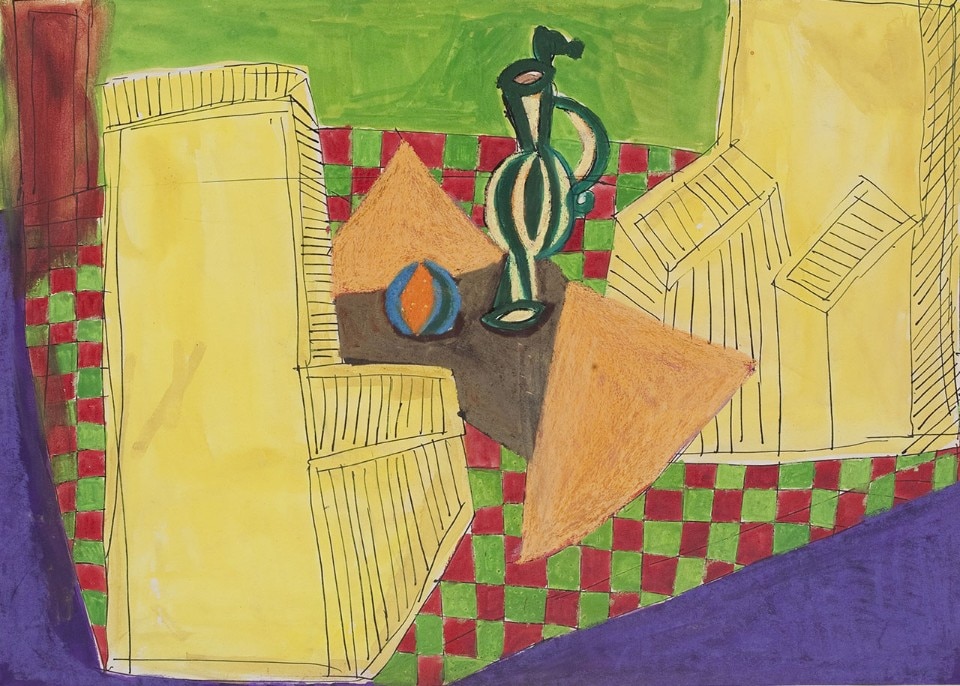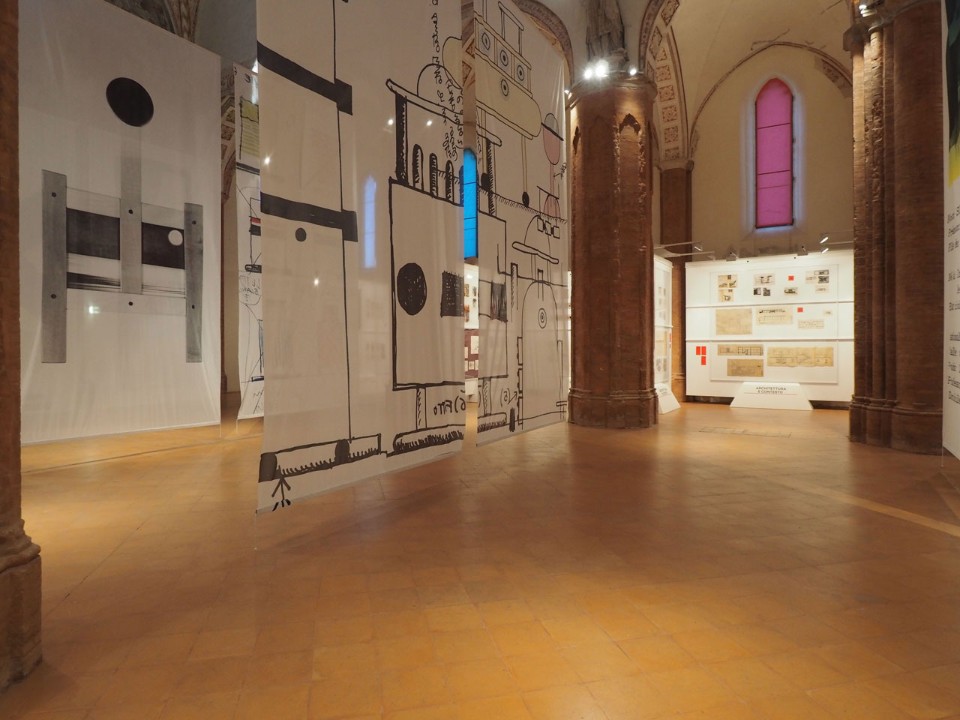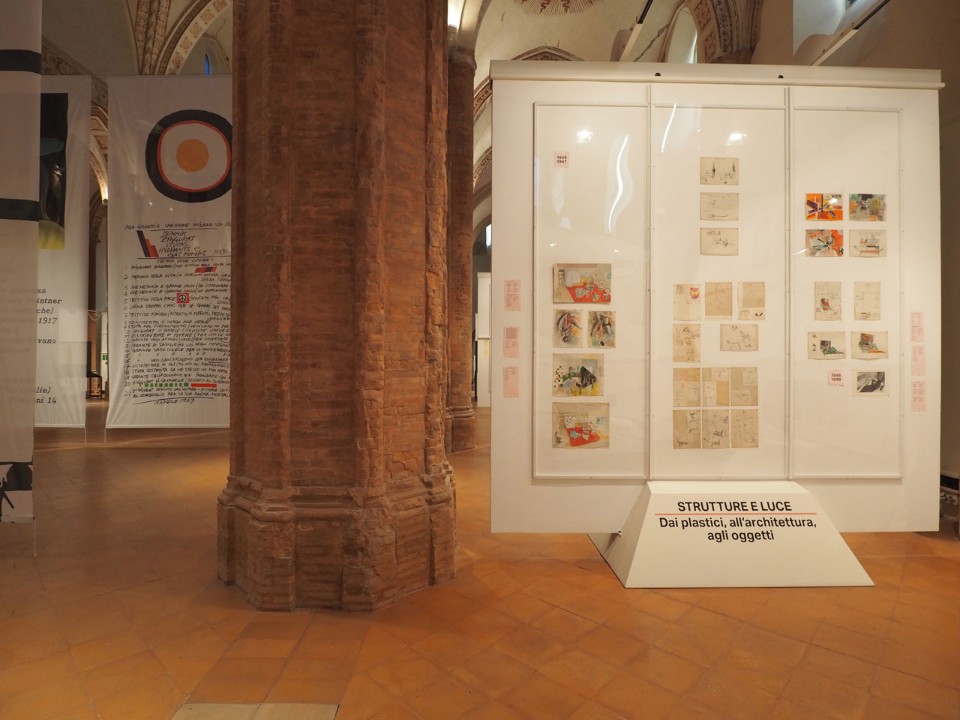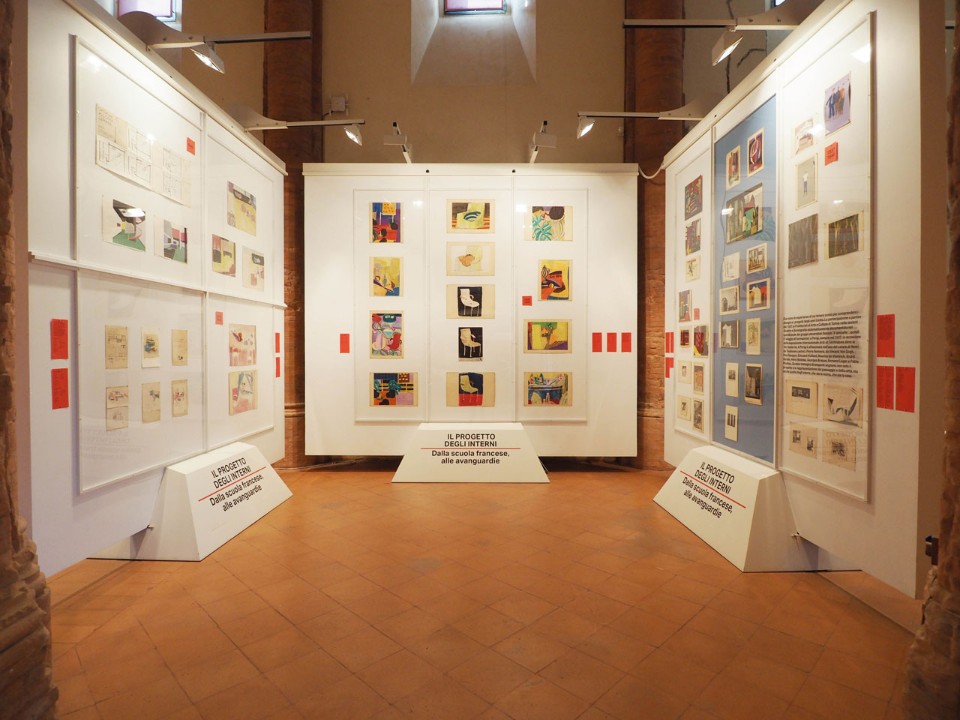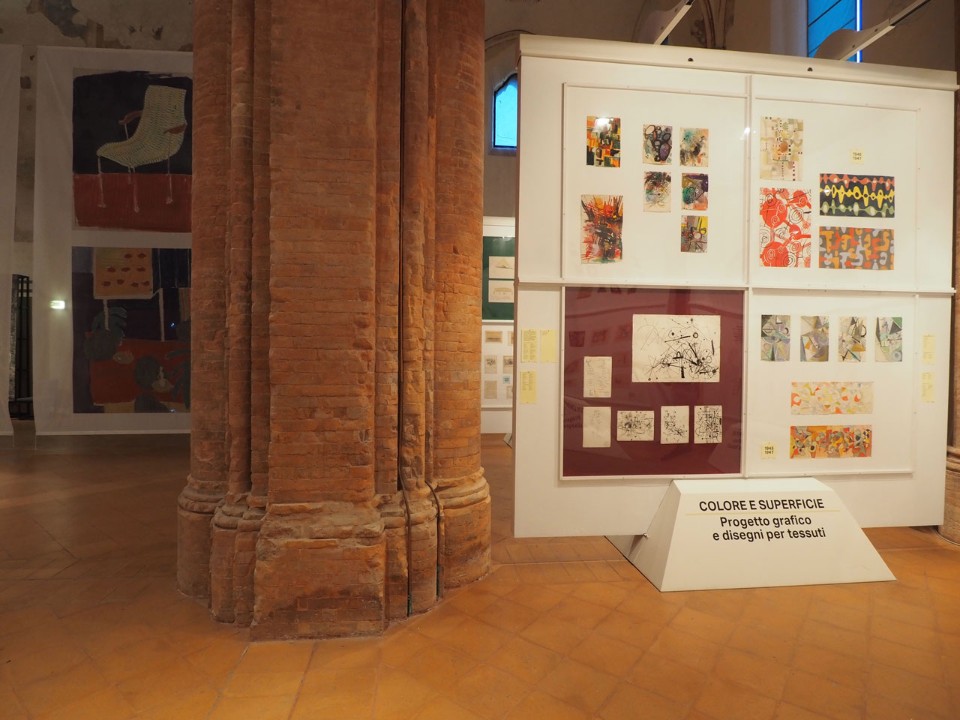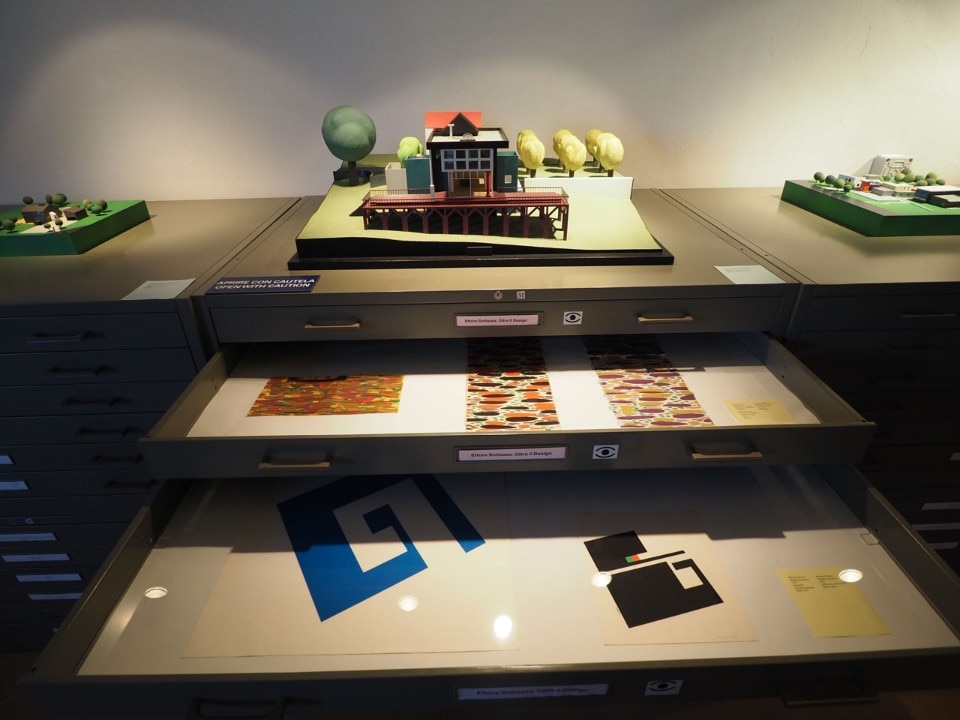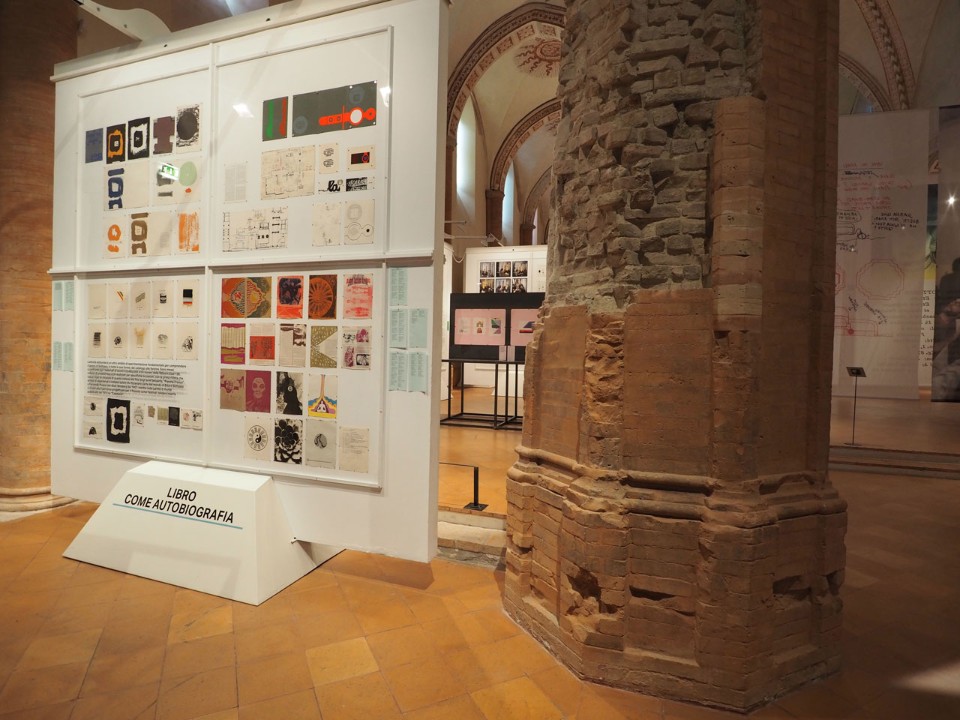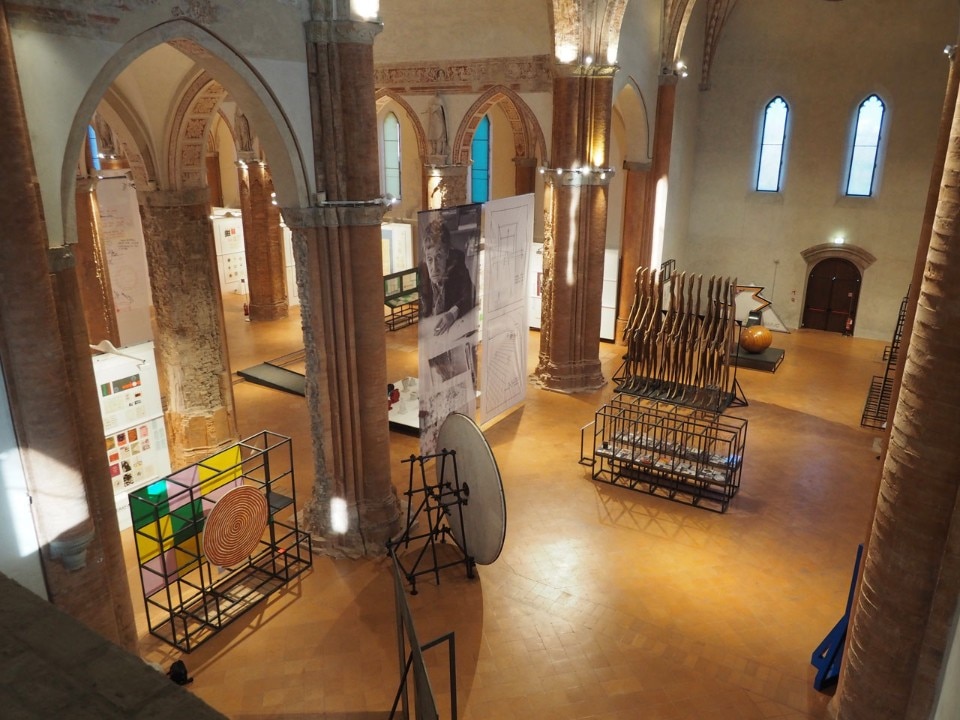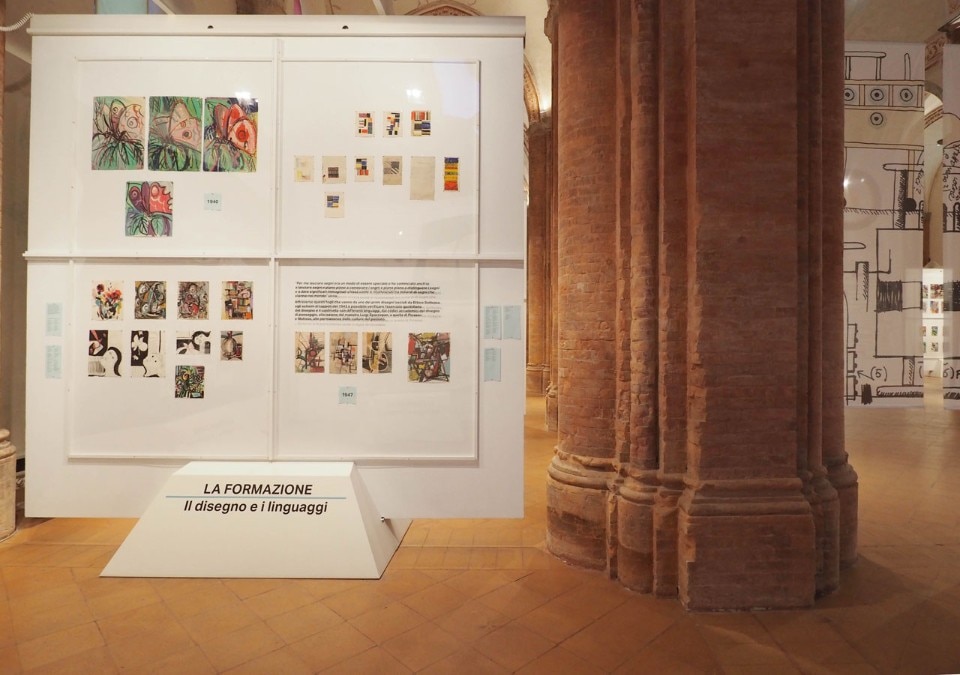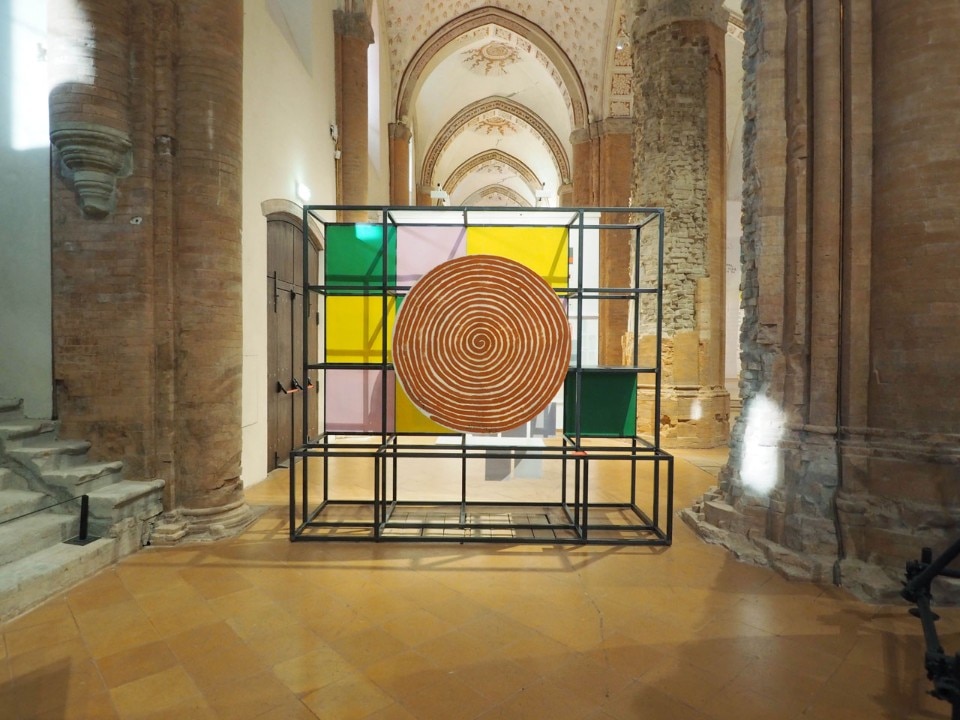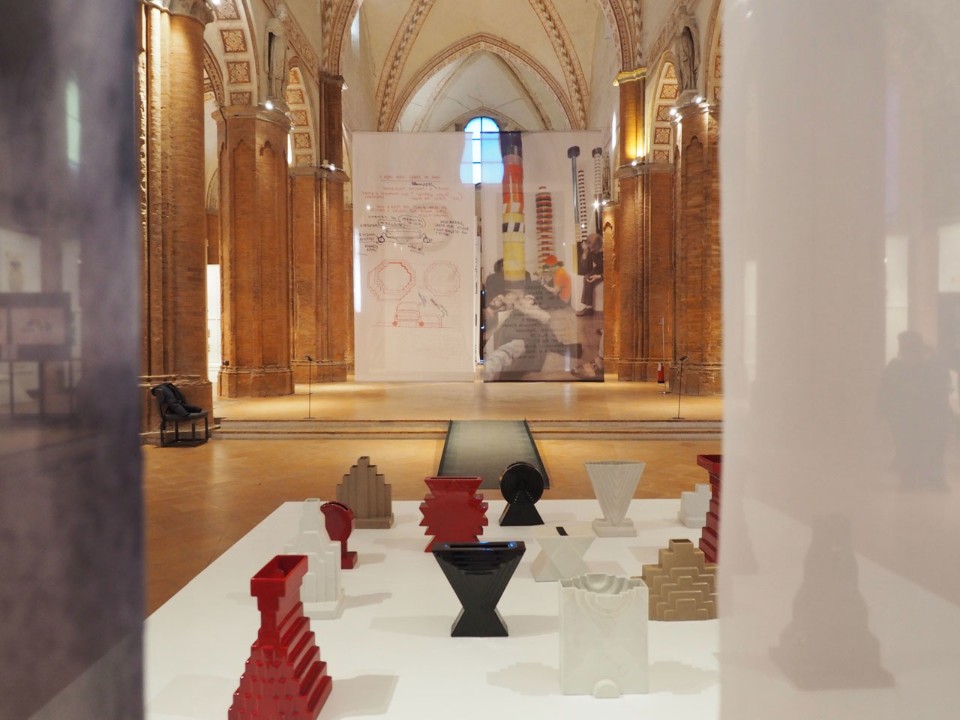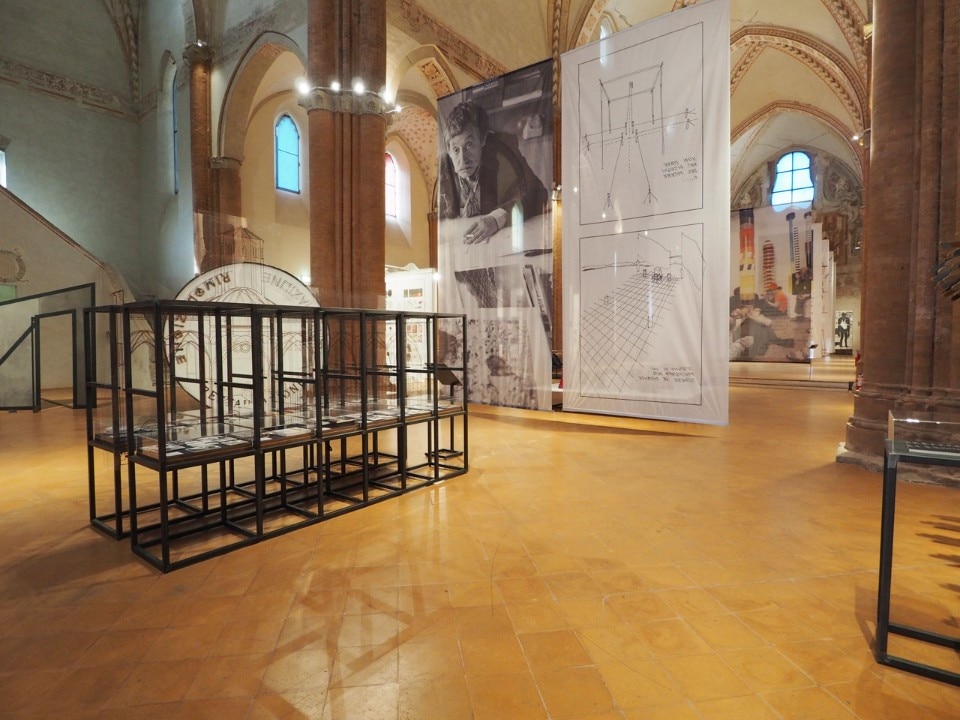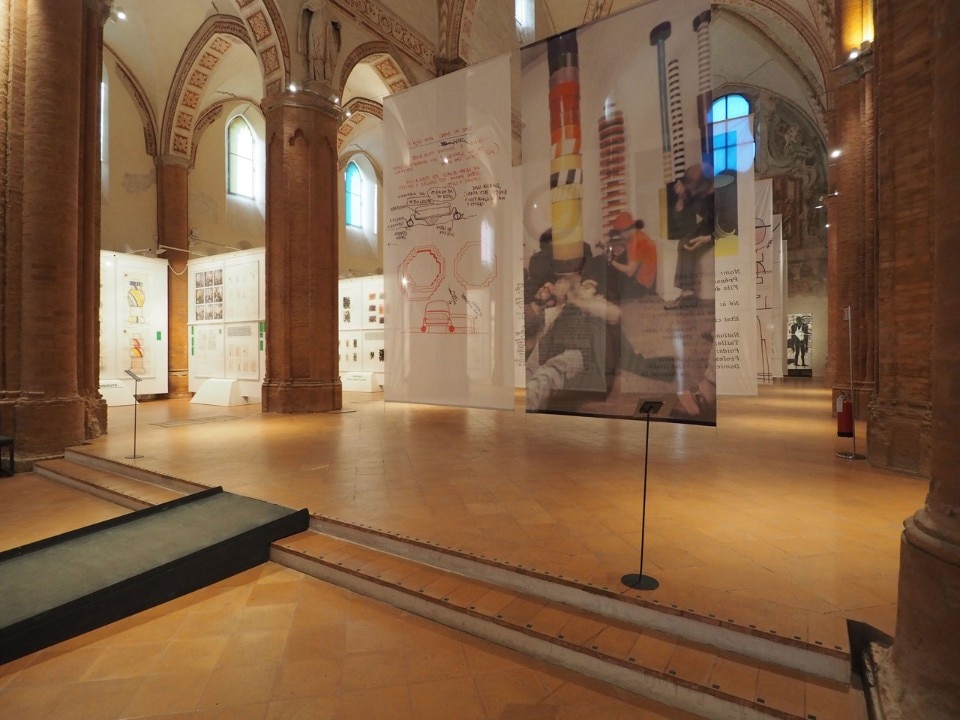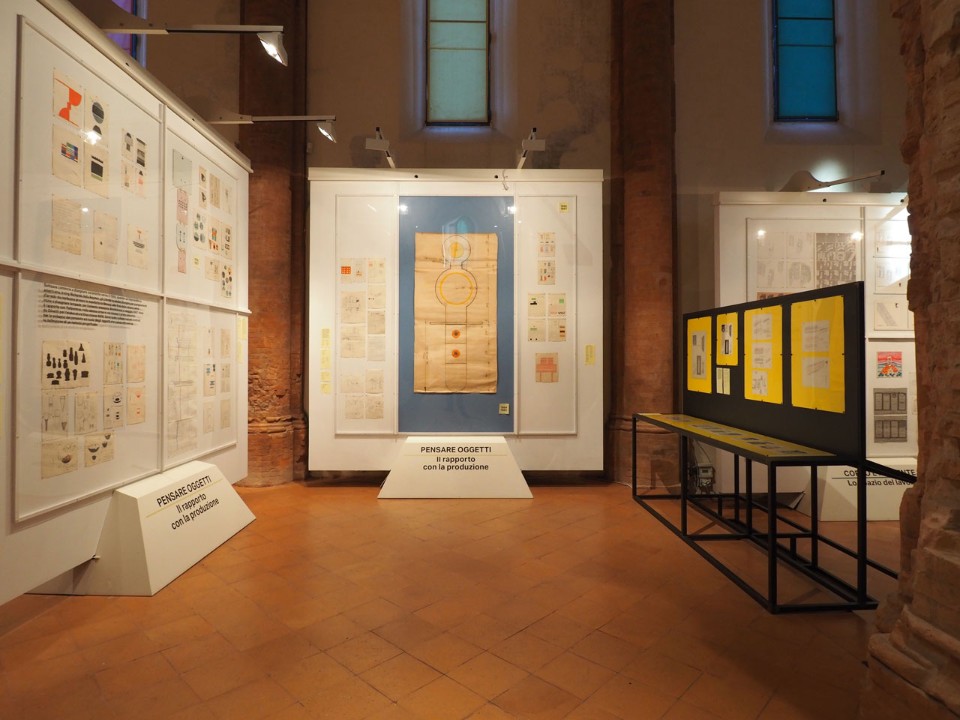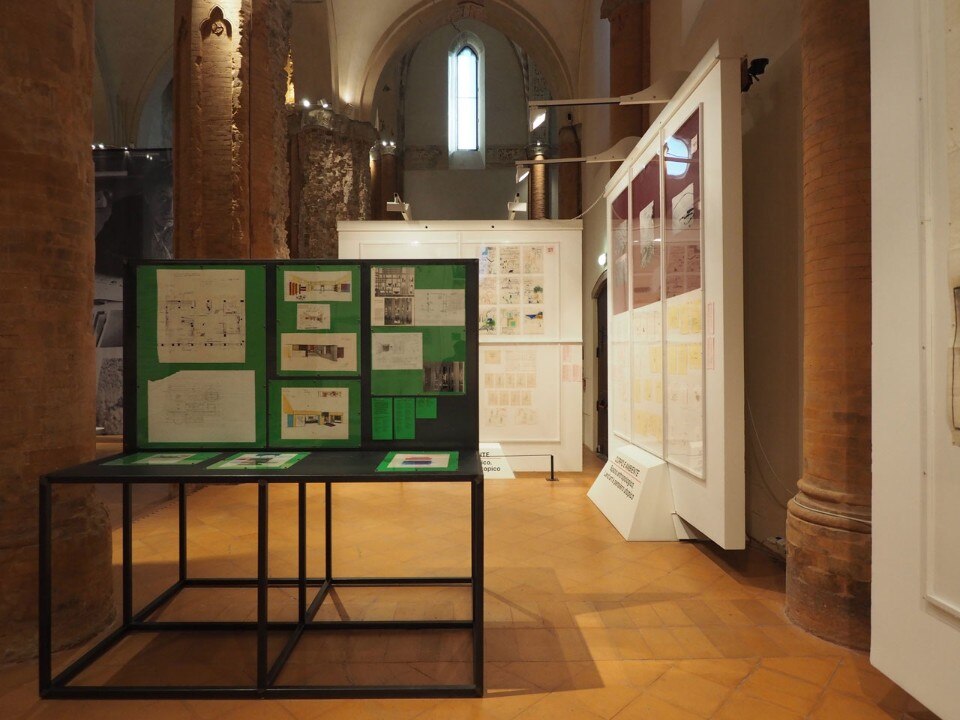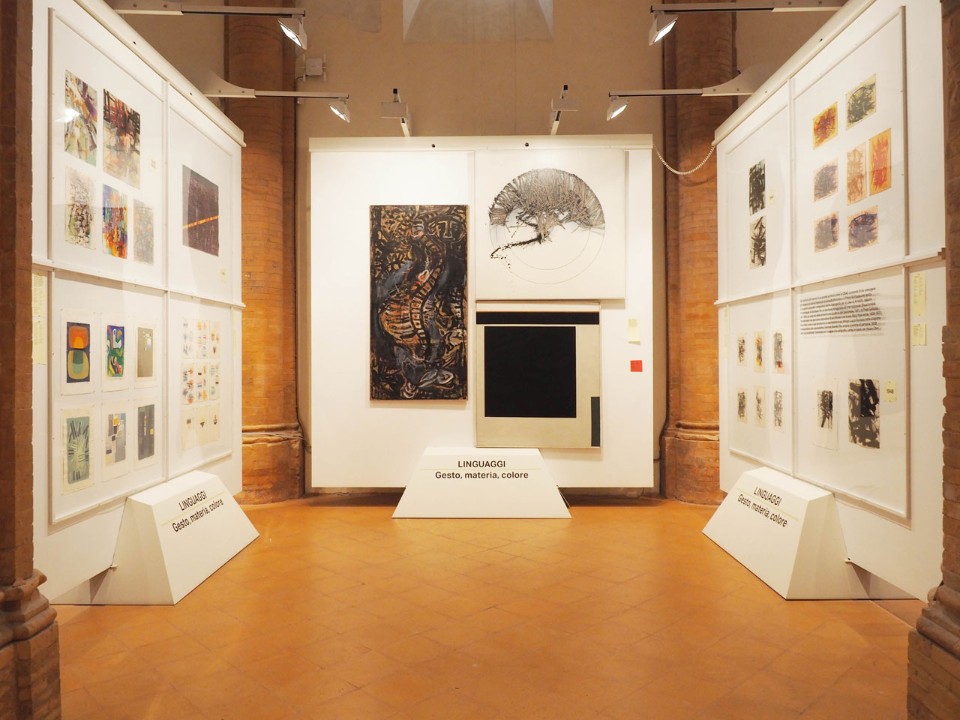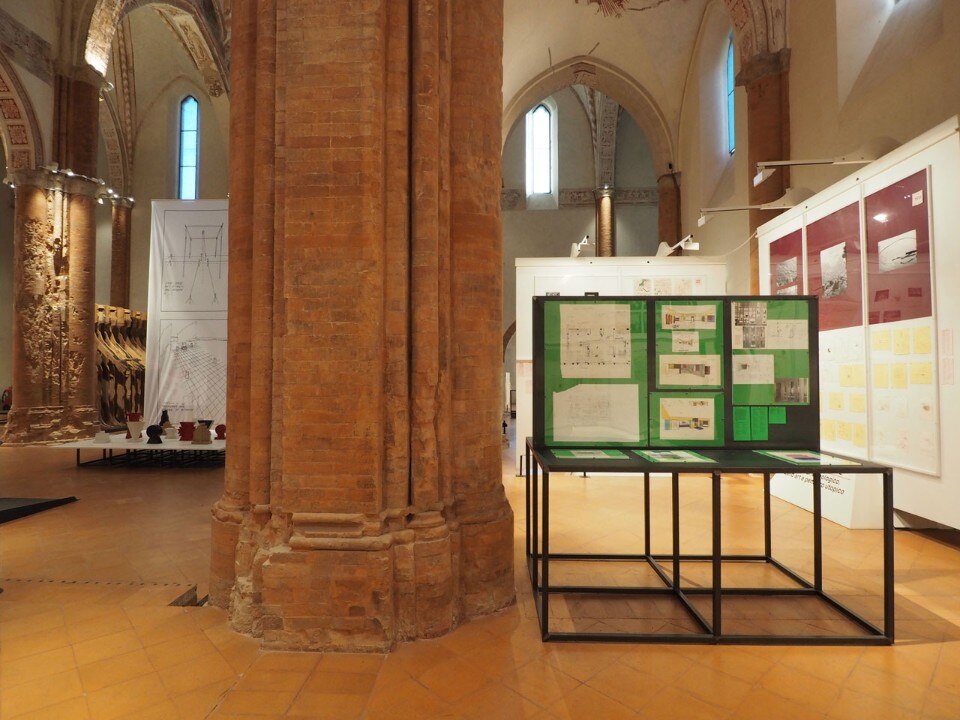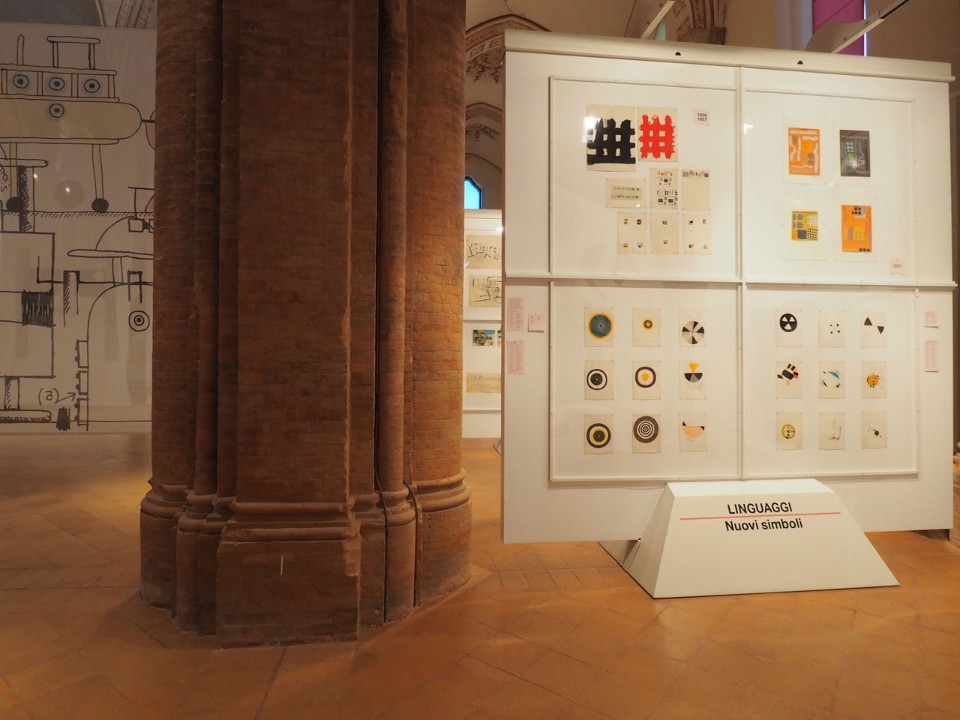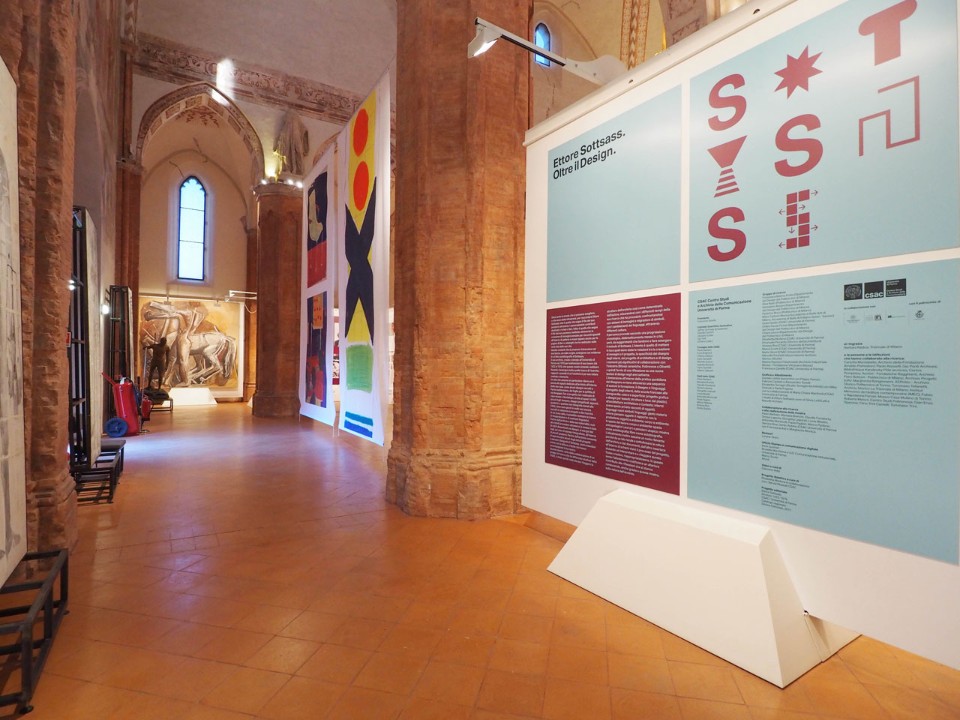The Ettore Sottsass centenary is coming to a close. One hundred years have passed since his birth, and many events have celebrated the charismatic designer-architect. Several comet-tails of these initiatives will remain open to visitors until spring. Rightly so, because the labour of having conceived articulate, rich retrospectives merits time for enjoyment over and above the calendar's pages. Another aspect worth special attention is the opportunity to compare different visions and approaches – some complementary, others contrasting, but all of them necessary. You get the impression that one single show, one single book, one single conference would not be able to capture all the energy that still erupts from the story of the Austrian-born architect who was schooled in Turin. All throughout a long and productive career, he honed his unique way of combining free expression, methodological strictness, a sense of humour, the knowledge of history and the practice of design. The celebratory string of exhibitions at the Met Breuer, the Triennale di Milano and the Vitra Design Museum has now been joined by the one inaugurated here in Parma on 18 November at the Valserena abbey, the seat of the Centro Studi e Archivio della Communicazione (CSAC). "Ettore Sottsass – Oltre il design" displays a scholarly selection of the large amount of drawings donated by Sottsass to the CSAC in 1979, when he entrusted his whole archive amassed until then to Arturo Carlo Quintavalle, the art historian who founded the Centro Studi in 1968. Thanks to the work of a dedicated group of historians, design critics and curators, Sottsass's donation has been mined to great visual effect.
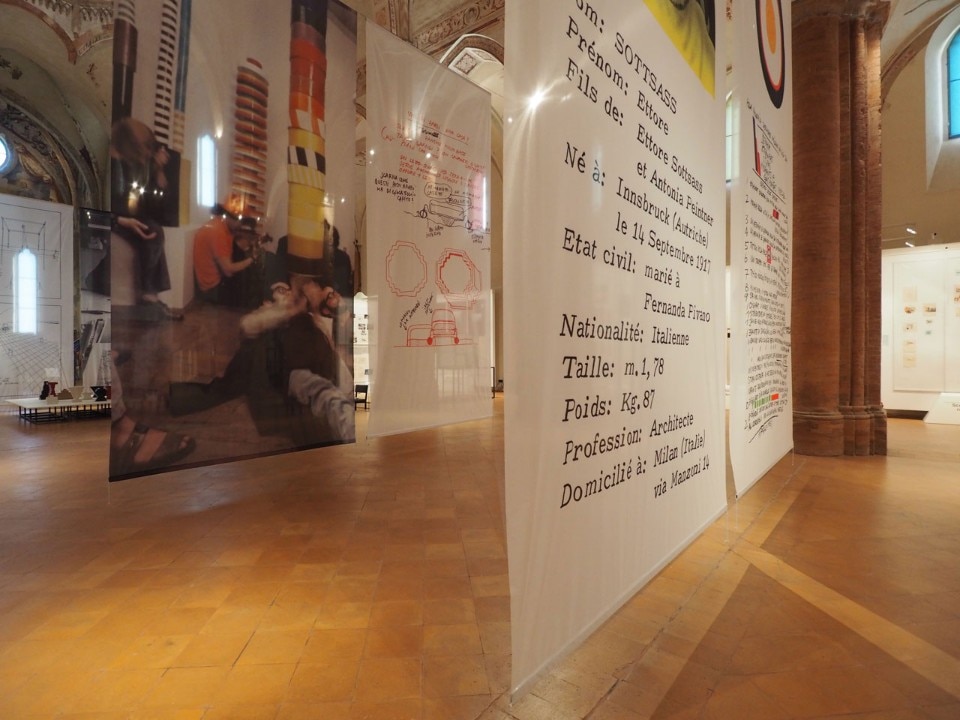
Divided into 14 themed sections, the display is an exceptional excuse to visit the Cistercian abbey of Valserena, where the CSAC has been located since 2007. Two years ago, after the restoration of the elegant monastic church, an atmospheric exhibition centre opened on these challenging premises. The solemnity of the surroundings makes the discovery route through the Sottsass drawings seem more composed in comparison with the fancy, light-hearted or pop-coloured settings offered by other exhibitions. Francesca Zanella, the president of the archives, describes it as "an exploded view", a collective effort composed of precise viewpoints belonging to Sottsass. It looks like a four-dimensional projection of the creative process that allowed him to influence Italian culture so incisively in the past 60 years.
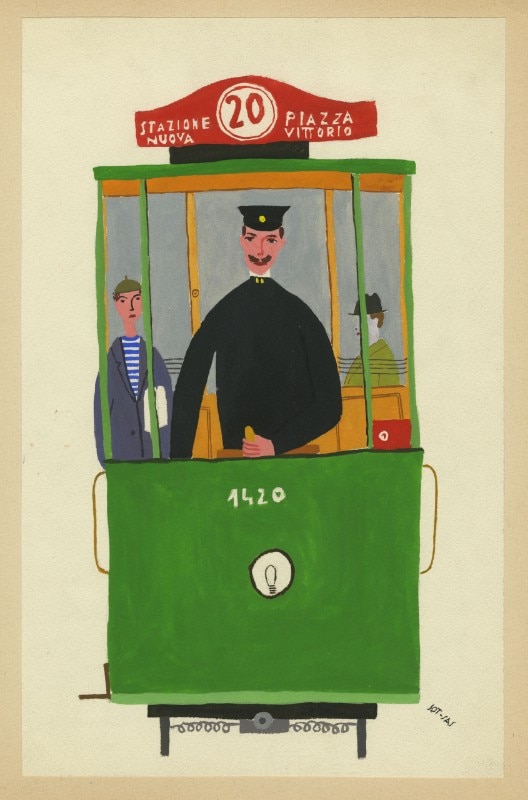
Both the printed catalogue published by Silvana Editoriale and the exhibition route proceed in chronological order. Like a polyphonic choir, comparisons and juxtapositions sound the same notes as a song in close harmony, or rather the same forms in a design on a variety of scales. There are themes that begin during Sottsass's studies at the Turin Polytechnic, shown in drawings from the 1930s. They reveal the architectural matrix lying unexpectedly behind many projects. The matrix is used as a metronome of his production, which thanks to the exhibition route comes across more logically and systematically. The show introduces Sottsass's masters. First of all, there is the painter Luigi Spazzapan. Then there are Emilio Scanavino, Mauro Reggiani, Hsiao Chin, Arnaldo Pomodoro, Pinot Gallizio and Gastone Novelli, perhaps presented in an overly didactic way, but introduced by means of side-by-side positioning that leads to direct comparison, paper next to paper, illustrating the visual world whence Sottsass took inspiration. Here, the display comes into its own not only in intention, but also in the effects and affection it shows, despite that the exhibition eschews mere emotional evocation. The fourth element is the archive itself, the centrepiece of the last part of the route hosted in the Sala delle Colonne, where secret compartments, drawers and display cases have been opened to the public along the lines of a principle by Michel Foucault that is well known to curators: “ce qui, hors de nous, nous délimite” (1969, referring to archive analysis). There is the unveiling of conceptual meanings, an oxymoron represented by Sottsass, Andrea Branzi, Bruno Munari and other designers with whom he is compared in this last section. There emerges the well-substantiated image of a man who was ardent, inflexible, a minute and precise observer, who assimilated other cultures, techniques and visual languages. The intersecting ways in which he displayed these traits can be traced here.
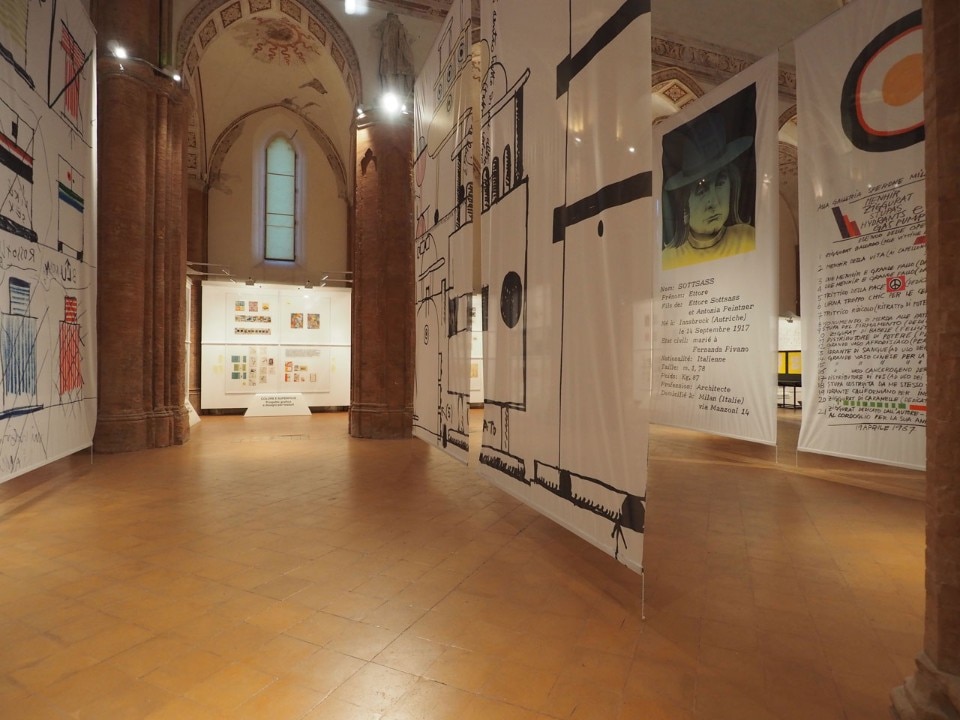
Precisely these intersections are highlighted by the display. The large church hosting it has been divided along the lines of its transepts. The horizontal layout runs from one side to the other by parallel white panels that create temporary chapels interspersed by voluminous canvases strung across the central nave. This is the only concession to levity in the sacred interior. With the graphic designer Daniele Ledda, the curator Elisabetta Terragni worked along the lines of minimum disturbance regarding the exhibits. Small magnets hold up almost 700 sheets of paper grouped by titles that could be used for a hypothetical scientific conference: "Schooling: drawings and visual languages", "The design of interiors”, “Colours and surfaces", "Structures and light", "Exhibitions as autobiography" and "Books as autobiography". All demonstrate the will to emphasise the relations and the eternal refrains found in an X-rayed career under glass. At the end of the trip, which requires from the visitor almost religious concentration, all of a sudden we find ourselves closer to Sottsass. We are reminded of the words he wrote for his maestro, and that we would like to dedicate to him: “I adored listening to Spazzapan tell stories and remember things with such detail and care, almost as if he extracted them from the silent, motionless, pale, golden light of his studio, from the sugary scent of paintings and papers, almost from under the hidden spaces behind the frames and the piles of drawings. He chose the words and the tones of his voice, making the evocation of those long-ago experiences more precise, polished and at the same time soft and blurry. He gave me the echo of that same love so that I could love like he remembered and like he tried to remember.”
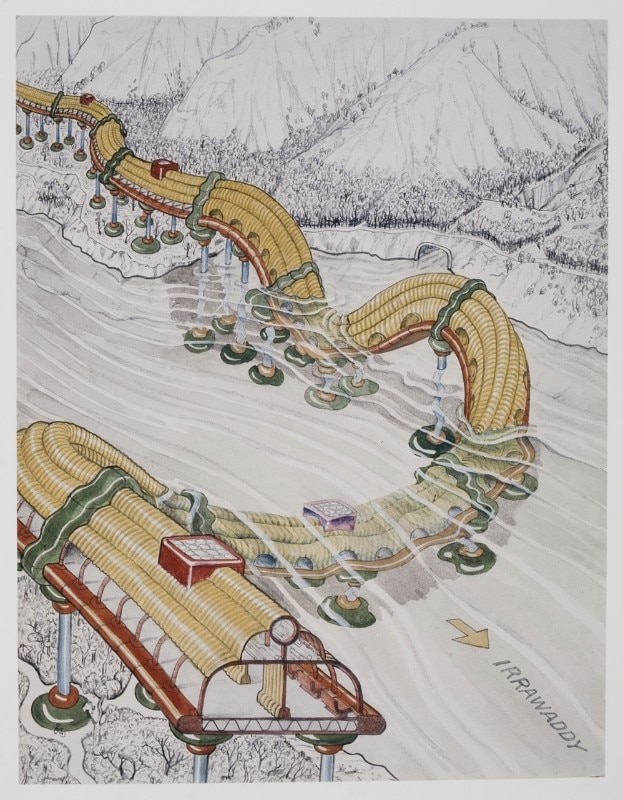
- Exhibition title:
- Ettore Sottsass. Oltre il design
- Opening dates:
- 18 November 2017 – 8 April 2018
- Exhibition venue:
- CSAC - Centro Studi e Archivio della Comunicazione
- Address:
- Abbazia di Valserena, via Viazza di Paradigna 1, Parma


